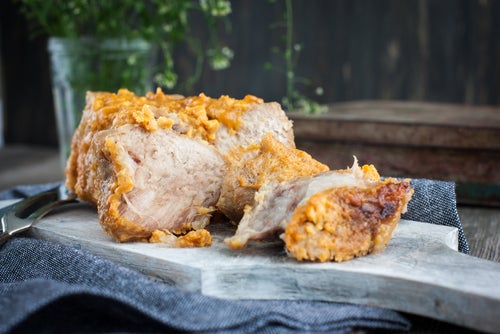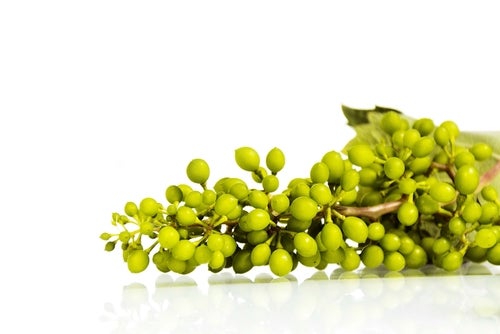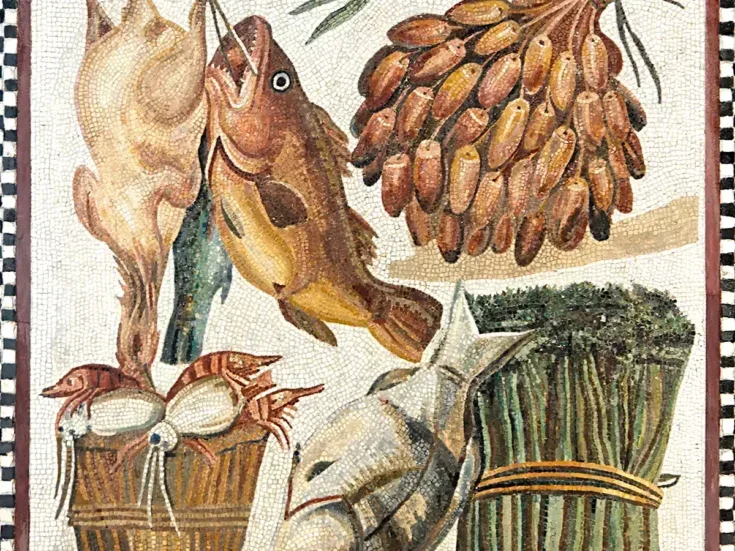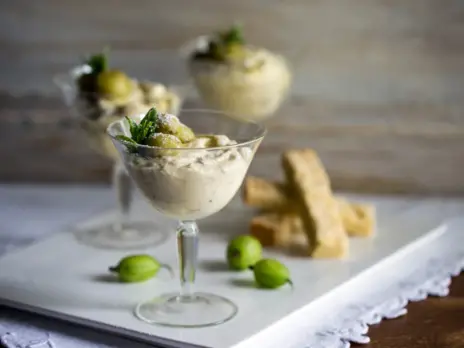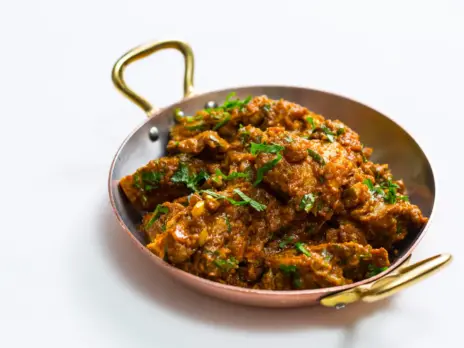
No one seems to doubt that polvo à lagareiro, octopus with potatoes and olive oil, is a traditional dish, a part of Portugal’s culinary heritage that is considered special enough to be served at celebrations such as Christmas Eve, while being simple enough for more everyday occasions the rest of the year. But no one seems to know exactly where it came from or, even less, when.
It has been talked of as a dish that goes back centuries and there is mention of octopus being a popular foodstuff in Portugal in Phoenician times and of it being caught on the Atlantic coast in subsequent centuries by the Romans and then the Muslims, ready for air drying in the sun or, later, salting in the same way as cod. (Apparently, you can still see octopus being sun-dried traditionally on the beach at Nazaré, about 75 miles north of Lisbon.)
Yet, despite the weight of history, there seems to be no early recipe, although not for lack of early Portuguese culinary texts. The Infanta Dona Maria took her Livro de Cozinha da Infanta D. Maria de Portugal with her to Italy in 1565, the year she married the Duke of Parma and Piacenza (it’s still in Naples) and Portugal’s first printed cook book, the Arte de Cozinha by Domingos Rodrigues, appeared in 1680, with recipes said by The Oxford Companion to Food to be less medieval in flavor than those of the earlier Livro de Cozinha.
As for place of origin, opinion is divided as to whether polvo à lagareiro originated in the province of Trás-os-Montes in the far northeast, which is renowned for its olive oil, or in the Beiras region stretching from the Atlantic coast to the Spanish border in the centre of the country.
The derivation of the name is clear, though. A lagareiro is an olive oil producer or miller and à lagareiro refers to the generous amount of oil used in the dish, as it does also when bacalhau or fresh cod are prepared à lagareiro.
It’s worth remembering here that, unlike in other Mediterranean countries, fish and seafood, rather than meat, are the animal mainstay of Portuguese food, and octopus is one of the most popular, behind cod, sardines, and hake in volume, but ahead of other seafoods.
The ingredients and cooking of polvo à lagareiro are simple but distinctive. Tenderized octopus (I shan’t go into the traditional tenderizing methods; freezing is usual today) is first cooked whole, often with an onion and some bay leaves (I use the method in Giorgio Locatelli’s book, Made in Sicily, in which the octopus cooks in its own juices in a closed pan with olive oil, but no water). The tentacles are then cut up, put in an oven or grill dish surrounded by batatos a murro—literally “punched potatoes”—small potatoes that have been boiled, skin-on, then lightly pressed to break the skins.
The octopus and potatoes are doused with olive oil, which may have been infused with garlic. If not, crushed garlic will be added, usually with some herbs, especially cilantro (coriander leaf) or parsley. The dish is then grilled or baked in the oven. A variation is to roast the batatos a murro separately and serve them alongside the octopus.
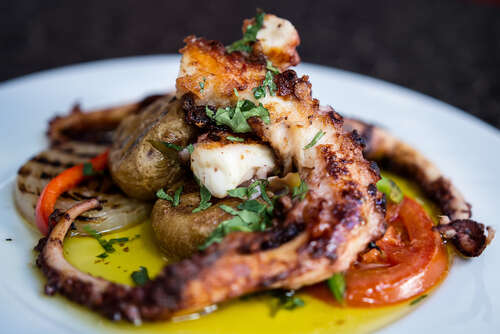
The best wines to pair with polvo à lagareiro
This is a dish that is more than the sum of its parts—three principal ingredients and two-step cooking—but, even so, there is nothing complicated about pairing wines with it. There is a degree of richness from the olive oil and, depending on its origin, age, and quality, there could be a little peppery or grassy/herby pungency to consider. Similarly, if you grill the dish, there will be a little char flavor to bear in mind, but it won’t radically change the wine choices.
I like white wines with acidity to cut through the oily richness and wines that don’t have obvious oak or “fat” (from, say, extensive bâtonnage, a warm climate, malolactic or the grape varieties). I also avoid overtly fruity wines, thus ruling out many Sauvignon Blancs and Rieslings, although these grape varieties can work if the fruit lies behind a dominant saline or mineral character.
Apologies to all those who dislike or distrust the word ‘mineral’, but it’s a useful shorthand for the kind of dry whites I find work well with polvo à lagareiro: wines such as Santorini Assyrtiko, serious Vinho Verde (for example from Soalheiro or Anselmo Mendes), Godello (such as Bodegas Rafael Palacios in Valdeorras or Raul Perez in Bierzo), Rías Baixas Albariño, provided it’s not too brightly fruity (among others, I would be happy with one from Palacio de Fefiñanes or Pazo de Señorans).
Other whites to consider are Etna Bianco (I have enjoyed the wines of Benanti recently), Austrian Grüner Veltliner (from F X Pichler, Bründlmayer ,or Emmerich Knoll to name only three), Greco di Tufo and such seafood fallbacks as Muscadet, Chablis, Soave, Txakoli and Vermentino.
It doesn’t have to be white, of course, but polvo à lagareiro tends to emphasise the fruit in rosés and many don’t have quite the necessary acid grip. Successful ones are often from vineyards not far from the sea, for example Corsica or coastal Provence. Tavel is also a possibility.
Tannin is no friend of octopus, ruling out most reds, traditional qvevri amber wines and other white-grape wines that have had long skin-contact. If you do want red, seek out styles with low tannin, a degree of acid freshness and fruit that’s off-set by mineral, peppery or herbal notes. Among others, I would consider Beaujolais Crus such as Chénas and Côte de Brouilly, high-elevation Garnacha vineyards and unoaked Barbera.
If I may, I shall leave the last—breathless—word on polvo lagareiro to the city guide lisbon.vip […it is…] “not just a dish; it is a testament to Portugal’s history, culture, and identity. It speaks of a nation intimately tied to the sea, where the bounty of the ocean and the richness of the land converge. It reflects the pride and passion of the Portuguese people, who have lovingly passed down this culinary tradition through the generations.”

